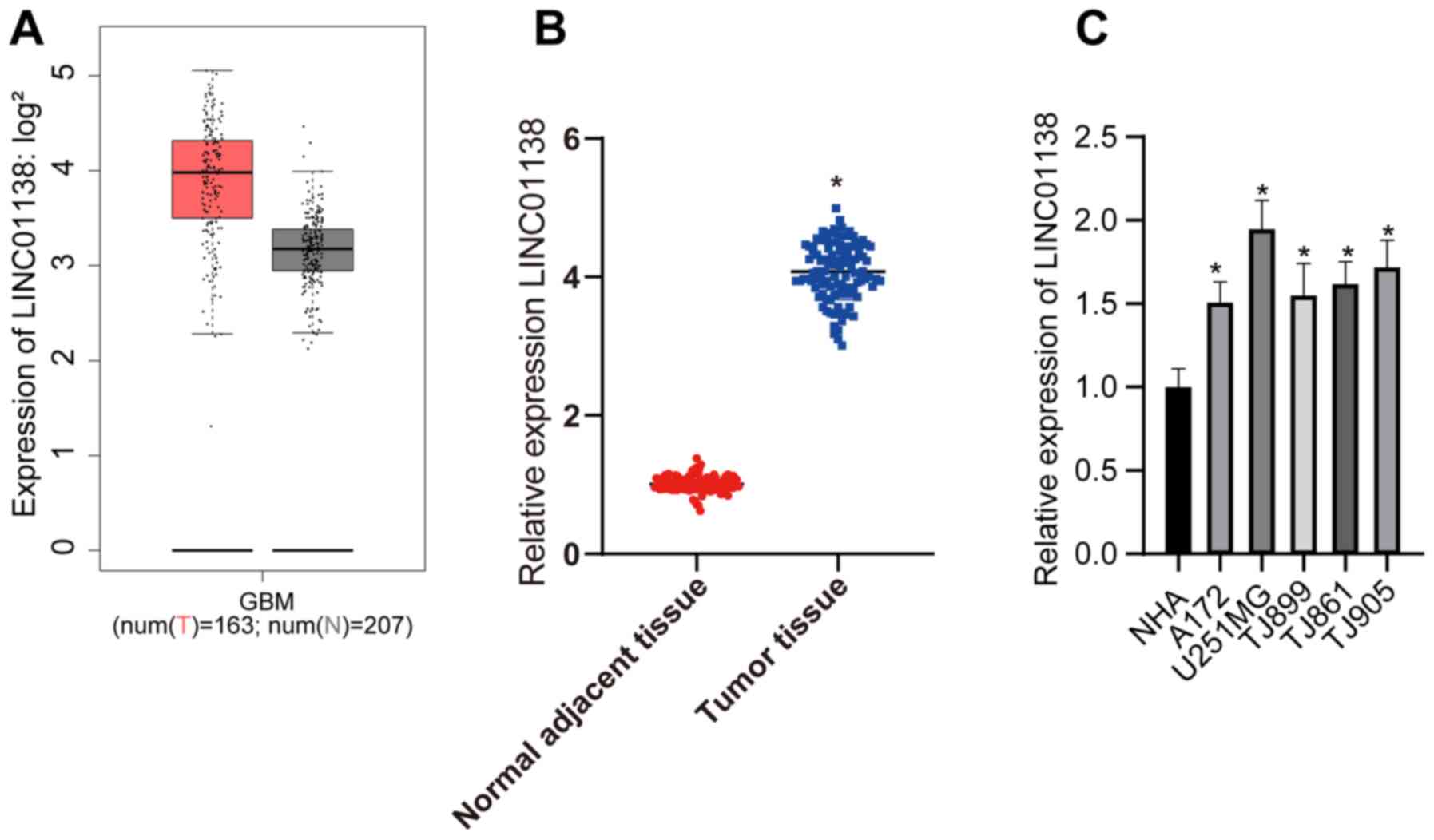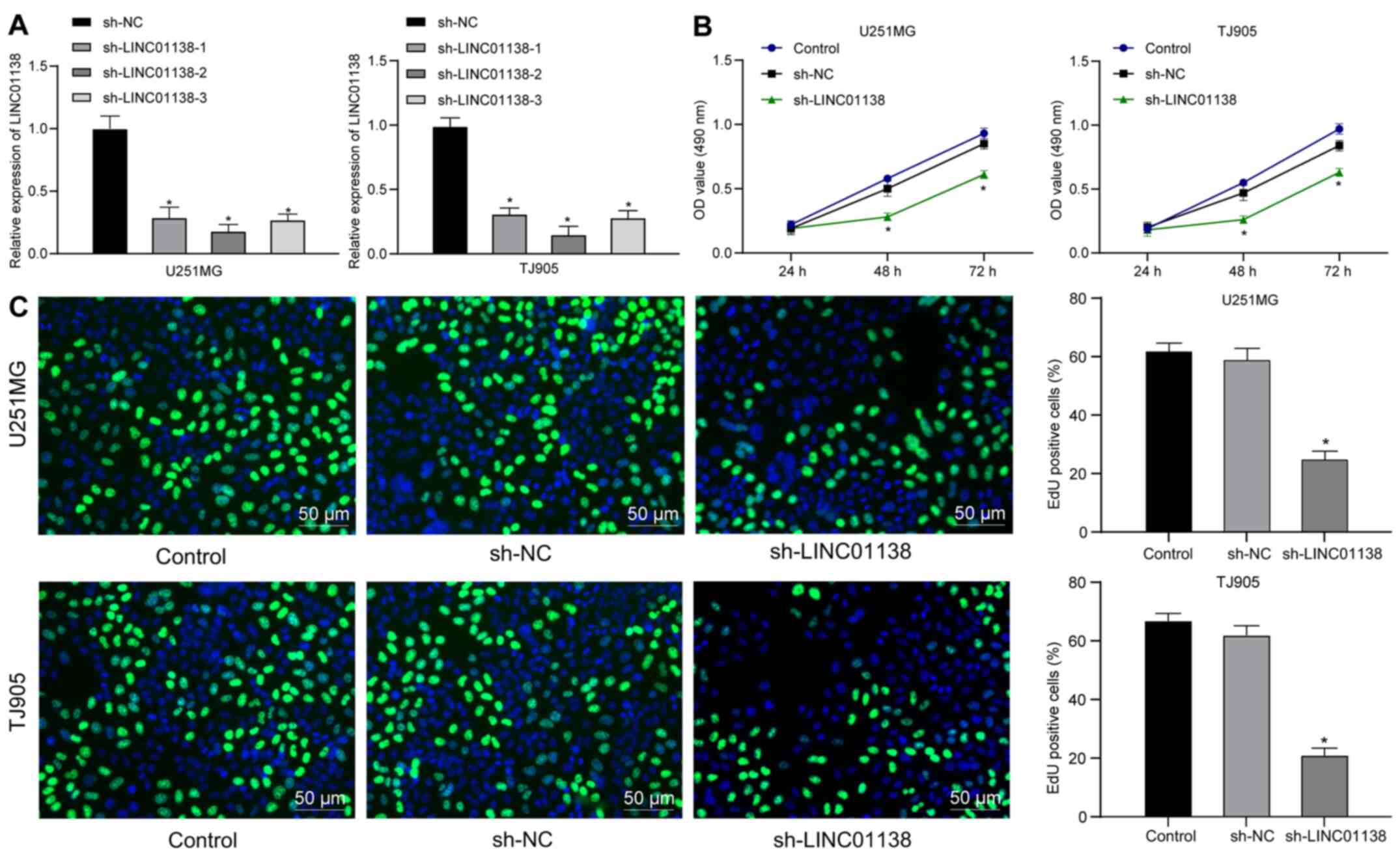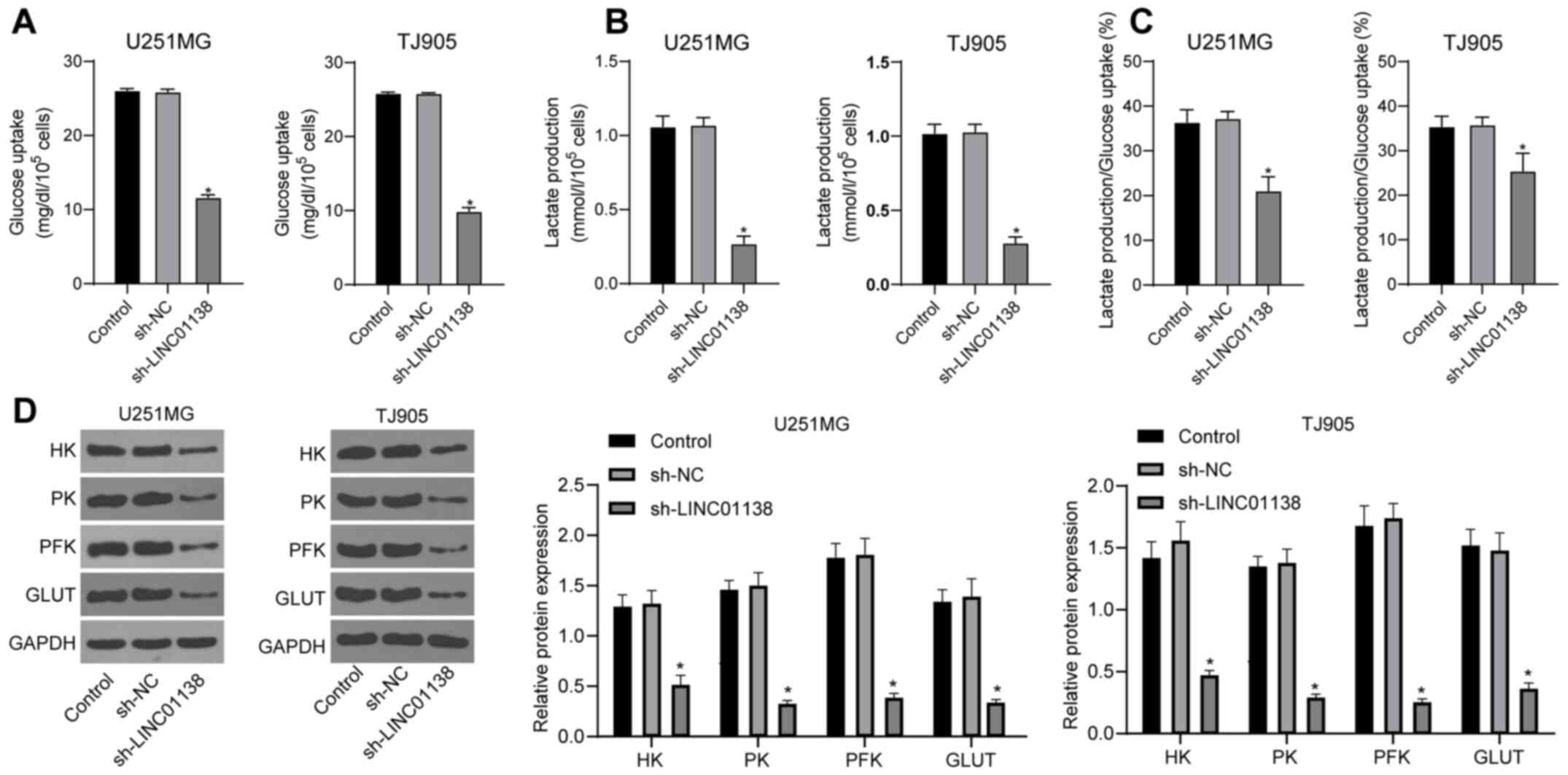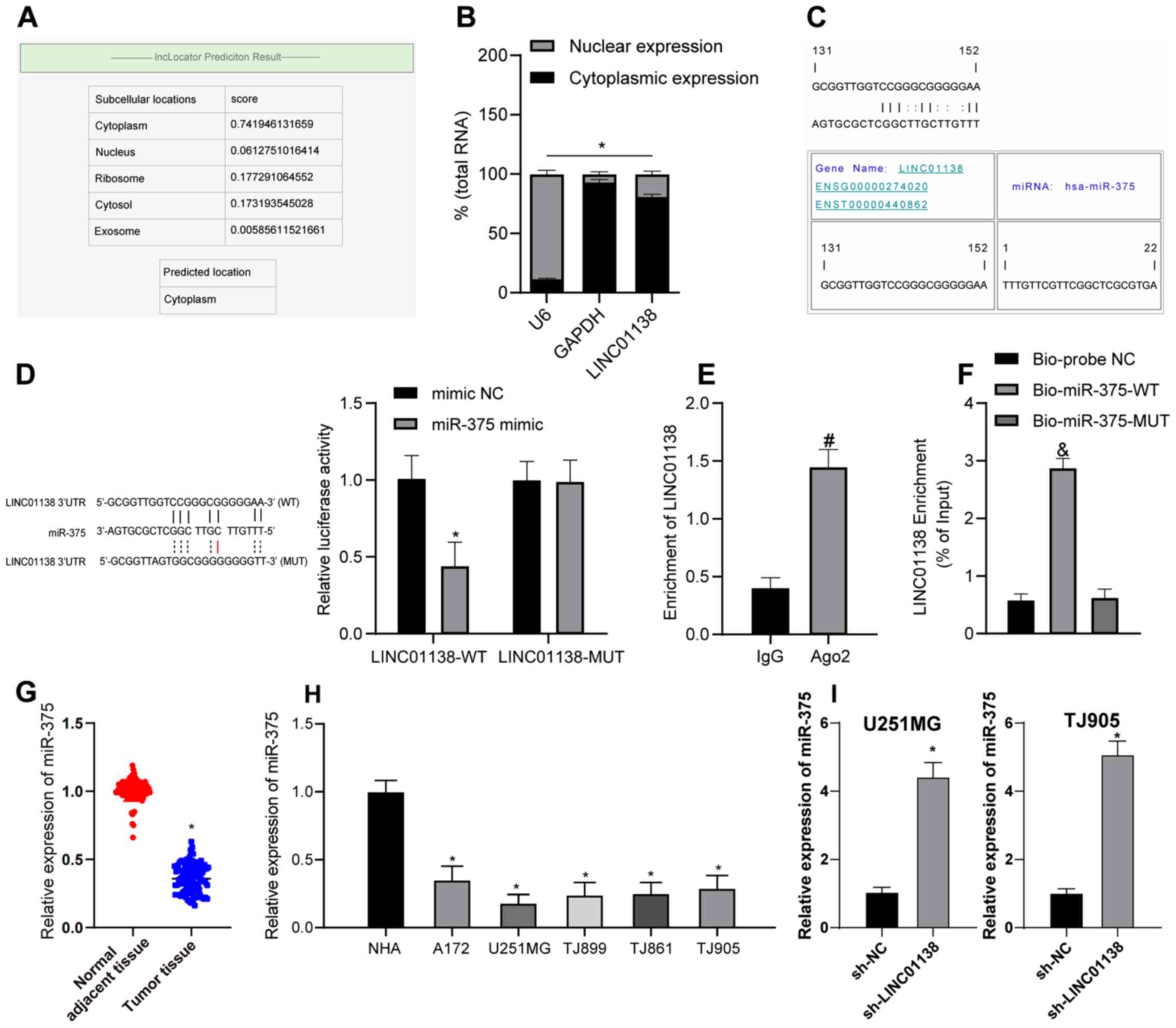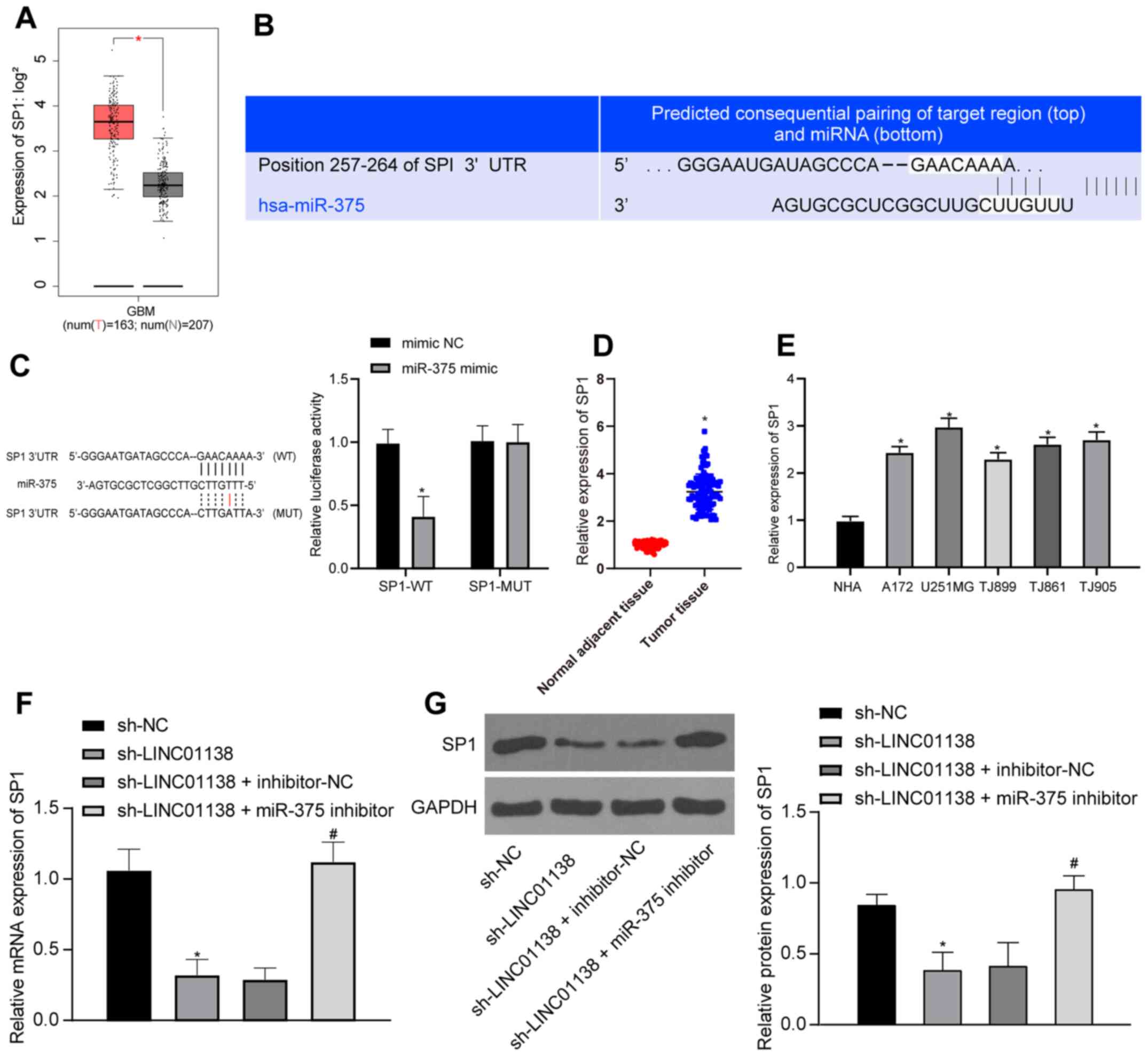|
1
|
Matteoni S, Abbruzzese C, Villani V,
Malorni W, Pace A, Matarrese P and Paggi MG: The influence of
patient sex on clinical approaches to malignant glioma. Cancer
Lett. 468:41–47. 2020. View Article : Google Scholar
|
|
2
|
Kunadis E, Lakiotaki E, Korkolopoulou P
and Piperi C: Targeting post-translational histone modifying
enzymes in glioblastoma. Pharmacol Ther. 220:1077212021. View Article : Google Scholar
|
|
3
|
Angelopoulou E, Paudel YN and Piperi C:
Critical role of HOX transcript antisense intergenic RNA (HOTAIR)
in gliomas. J Mol Med (Berl). 98:1525–1546. 2020. View Article : Google Scholar
|
|
4
|
Ostrom QT, Bauchet L, Davis FG, Deltour I,
Fisher JL, Langer CE, Pekmezci M, Schwartzbaum JA, Turner MC, Walsh
KM, et al: The epidemiology of glioma in adults: A ‘state of the
science’ review. Neuro Oncol. 16:896–913. 2014. View Article : Google Scholar
|
|
5
|
Molinaro AM, Taylor JW, Wiencke JK and
Wrensch MR: Genetic and molecular epidemiology of adult diffuse
glioma. Nat Rev Neurol. 15:405–417. 2019. View Article : Google Scholar
|
|
6
|
Zhou X, Zhang S, Niu X, Li T, Zuo M, Yang
W, Li M, Li J, Yang Y, Wang X, et al: Risk factors for early
mortality among patients with glioma: A population-based study.
World Neurosurg. 136:e496–e503. 2020. View Article : Google Scholar
|
|
7
|
Radin DP and Tsirka SE: Interactions
between tumor cells, neurons, and microglia in the glioma
microenvironment. Int J Mol Sci. 21:84762020. View Article : Google Scholar
|
|
8
|
Hakar MH and Wood MD: Updates in pediatric
glioma pathology. Surg Pathol Clin. 13:801–816. 2020. View Article : Google Scholar
|
|
9
|
McCrorie P, Vasey CE, Smith SJ, Marlow M,
Alexander C and Rahman R: Biomedical engineering approaches to
enhance therapeutic delivery for malignant glioma. J Control
Release. 328:917–931. 2020. View Article : Google Scholar
|
|
10
|
Wank M, Schilling D, Schmid TE, Schmid TE,
Meyer B, Gempt J, Barz M, Schlegel J, Liesche F, Kessel KA, et al:
Human glioma migration and infiltration properties as a target for
personalized radiation medicine. Cancers (Basel). 10:4562018.
View Article : Google Scholar
|
|
11
|
Tech K, Deshmukh M and Gershon TR:
Adaptations of energy metabolism during cerebellar neurogenesis are
co-opted in medulloblastoma. Cancer Lett. 356:268–272. 2015.
View Article : Google Scholar
|
|
12
|
Kim MS, Huang Y, Lee J, Zhong X, Jiang WW,
Ratovitski EA and Sidransky D: Cellular transformation by cigarette
smoke extract involves alteration of glycolysis and mitochondrial
function in esophageal epithelial cells. Int J Cancer. 127:269–281.
2010.
|
|
13
|
Zoraghi R, See RH, Gong H, Lian T, Swayze
R, Finlay BB, Brunham RC, McMaster WR and Reiner NE: Functional
analysis, overexpression, and kinetic characterization of pyruvate
kinase from methicillin-resistant Staphylococcus aureus.
Biochemistry. 49:7733–7747. 2010. View Article : Google Scholar
|
|
14
|
Snášel J, Machová I, Šolínová V, Kašička
V, Krečmerová M and Pichová I: Phosphofructokinases A and B from
mycobacterium tuberculosis display different catalytic properties
and allosteric regulation. Int J Mol Sci. 22:222021. View Article : Google Scholar
|
|
15
|
Sánchez-Alvarez R, Tabernero A and Medina
JM: Endothelin-1 stimulates the translocation and upregulation of
both glucose transporter and hexokinase in astrocytes: Relationship
with gap junctional communication. J Neurochem. 89:703–714. 2004.
View Article : Google Scholar
|
|
16
|
Stieber D, Abdul Rahim SA and Niclou SP:
Novel ways to target brain tumour metabolism. Expert Opin Ther
Targets. 15:1227–1239. 2011. View Article : Google Scholar
|
|
17
|
Bhan A, Soleimani M and Mandal SS: Long
noncoding RNA and cancer: A new paradigm. Cancer Res. 77:3965–3981.
2017. View Article : Google Scholar
|
|
18
|
Xue BZ, Xiang W, Zhang Q, Wang YH, Wang
HF, Yi DY, Xiong NX, Jiang XB, Zhao HY and Fu P: Roles of long
non-coding RNAs in the hallmarks of glioma. Oncol Lett.
20:832020.
|
|
19
|
Zhang X, Wu J, Wu C, Chen W, Lin R, Zhou Y
and Huang X: The LINC01138 interacts with PRMT5 to promote
SREBP1-mediated lipid desaturation and cell growth in clear cell
renal cell carcinoma. Biochem Biophys Res Commun. 507:337–342.
2018. View Article : Google Scholar
|
|
20
|
Salmena L, Poliseno L, Tay Y, Kats L and
Pandolfi PP: A ceRNA hypothesis: The Rosetta Stone of a hidden RNA
language? Cell. 146:353–358. 2011. View Article : Google Scholar
|
|
21
|
Dou GX, Zhang JN, Wang P, Wang JL and Sun
GB: Long intergenic non-protein-coding RNA 01138 accelerates tumor
growth and invasion in gastric cancer by regulating miR-1273e. Med
Sci Monit. 25:2141–2150. 2019. View Article : Google Scholar
|
|
22
|
Zhou Q, Liu J, Quan J, Liu W, Tan H and Li
W: MicroRNAs as potential biomarkers for the diagnosis of glioma: A
systematic review and meta-analysis. Cancer Sci. 109:2651–2659.
2018. View Article : Google Scholar
|
|
23
|
Hu C, Lv L, Peng J, Liu D, Wang X, Zhou Y
and Huo J: MicroRNA-375 suppresses esophageal cancer cell growth
and invasion by repressing metadherin expression. Oncol Lett.
13:4769–4775. 2017. View Article : Google Scholar
|
|
24
|
Zhao L, Lou G, Li A and Liu Y: lncRNA
MALAT1 modulates cancer stem cell properties of liver cancer cells
by regulating YAP1 expression via miR 375 sponging. Mol Med Rep.
22:1449–1457. 2020. View Article : Google Scholar
|
|
25
|
Xu F, Ye ML, Zhang YP, Li WJ, Li MT, Wang
HZ, Qiu X, Xu Y, Yin JW, Hu Q, et al: MicroRNA-375-3p enhances
chemosensitivity to 5-fluorouracil by targeting thymidylate
synthase in colorectal cancer. Cancer Sci. 111:1528–1541. 2020.
View Article : Google Scholar
|
|
26
|
Tang H, Huang X, Wang J, Yang L, Kong Y,
Gao G, Zhang L, Chen ZS and Xie X: circKIF4A acts as a prognostic
factor and mediator to regulate the progression of triple-negative
breast cancer. Mol Cancer. 18:232019. View Article : Google Scholar
|
|
27
|
Liu J, Zhan Y, Wang J, Wang J, Guo J and
Kong D: lncRNA-SNHG17 promotes colon adenocarcinoma progression and
serves as a sponge for miR-375 to regulate CBX3 expression. Am J
Transl Res. 12:5283–5295. 2020.
|
|
28
|
Wang X, Han L, Zhou L, Wang L and Zhang
LM: Prediction of candidate RNA signatures for recurrent ovarian
cancer prognosis by the construction of an integrated competing
endogenous RNA network. Oncol Rep. 40:2659–2673. 2018.
|
|
29
|
Lu M, Xu X, Xi B, Dai Q, Li C, Su L, Zhou
X, Tang M, Yao Y and Yang J: Molecular network-based identification
of competing endogenous RNAs in thyroid carcinoma. Genes (Basel).
9:442018. View Article : Google Scholar
|
|
30
|
Liang Y, Zhang C, Ma MH and Dai DQ:
Identification and prediction of novel non-coding and coding
RNA-associated competing endogenous RNA networks in colorectal
cancer. World J Gastroenterol. 24:5259–5270. 2018. View Article : Google Scholar
|
|
31
|
Yang WB, Hsu CC, Hsu TI, Liou JP, Chang
KY, Chen PY, Liu JJ, Yang ST, Wang JY, Yeh SH, et al: Increased
activation of HDAC1/2/6 and Sp1 underlies therapeutic resistance
and tumor growth in glioblastoma. Neuro Oncol. 22:1439–1451. 2020.
View Article : Google Scholar
|
|
32
|
Zhang X, Zhao X, Wang Y and Xing L: Long
non-coding RNA LINC00491 contributes to the malignancy of
non-small-cell lung cancer via competitively binding to
microRNA-324-5p and thereby increasing specificity protein 1
expression. Cancer Manag Res. 12:6779–6793. 2020. View Article : Google Scholar
|
|
33
|
Cong Z, Diao Y, Xu Y, Li X, Jiang Z, Shao
C, Ji S, Shen Y, De W and Qiang Y: Long non-coding RNA linc00665
promotes lung adenocarcinoma progression and functions as ceRNA to
regulate AKR1B10-ERK signaling by sponging miR-98. Cell Death Dis.
10:842019. View Article : Google Scholar
|
|
34
|
Guan H, Cai J, Zhang N, Wu J, Yuan J, Li J
and Li M: Sp1 is upregulated in human glioma, promotes
MMP-2-mediated cell invasion and predicts poor clinical outcome.
Int J Cancer. 130:593–601. 2012. View Article : Google Scholar
|
|
35
|
Percie du Sert N, Hurst V, Ahluwalia A,
Alam S, Avey MT, Baker M, Browne WJ, Clark A, Cuthill IC, Dirnagl
U, et al: The ARRIVE guidelines 2.0: Updated guidelines for
reporting animal research. PLoS Biol. 18:e30004102020. View Article : Google Scholar
|
|
36
|
Villa C, Miquel C, Mosses D, Bernier M and
Di Stefano AL: The 2016 World Health Organization classification of
tumours of the central nervous system. Presse Med. 47:e187–e200.
2018. View Article : Google Scholar
|
|
37
|
Xu B, Zhang Q, Luo X, Ning X, Luo J, Guo
J, Liu Q, Ling G and Zhou N: Selenium nanoparticles reduce glucose
metabolism and promote apoptosis of glioma cells through reactive
oxygen species-dependent manner. Neuroreport. 31:226–234. 2020.
View Article : Google Scholar
|
|
38
|
Tang Z, Li C, Kang B, Gao G, Li C and
Zhang Z: GEPIA: A web server for cancer and normal gene expression
profiling and interactive analyses. Nucleic Acids Res. 45:W98–W102.
2017. View Article : Google Scholar
|
|
39
|
Cao Z, Pan X, Yang Y, Huang Y and Shen HB:
The lncLocator: A subcellular localization predictor for long
non-coding RNAs based on a stacked ensemble classifier.
Bioinformatics. 34:2185–2194. 2018. View Article : Google Scholar
|
|
40
|
Miranda KC, Huynh T, Tay Y, Ang YS, Tam
WL, Thomson AM, Lim B and Rigoutsos I: A pattern-based method for
the identification of MicroRNA binding sites and their
corresponding heteroduplexes. Cell. 126:1203–1217. 2006. View Article : Google Scholar
|
|
41
|
Agarwal V, Bell GW, Nam JW and Bartel DP:
Predicting effective microRNA target sites in mammalian mRNAs.
eLife. 4:42015. View Article : Google Scholar
|
|
42
|
Zhang E, Han L, Yin D, He X, Hong L, Si X,
Qiu M, Xu T, De W, Xu L, et al: H3K27 acetylation activated-long
non-coding RNA CCAT1 affects cell proliferation and migration by
regulating SPRY4 and HOXB13 expression in esophageal squamous cell
carcinoma. Nucleic Acids Res. 45:3086–3101. 2017. View Article : Google Scholar
|
|
43
|
Livak KJ and Schmittgen TD: Analysis of
relative gene expression data using real-time quantitative PCR and
the 2(−ΔΔC(T)) method. Methods. 25:402–408. 2001. View Article : Google Scholar
|
|
44
|
Diehl KH, Hull R, Morton D, Pfister R,
Rabemampianina Y, Smith D, Vidal JM and van de Vorstenbosch C;
European Federation of Pharmaceutical Industries Association and
European Centre for the Validation of Alternative Methods, : A good
practice guide to the administration of substances and removal of
blood, including routes and volumes. J Appl Toxicol. 21:15–23.
2001. View Article : Google Scholar
|
|
45
|
Cheng R and Chen Y, Zhou H, Wang B, Du Q
and Chen Y: B7-H3 expression and its correlation with
clinicopathologic features, angiogenesis, and prognosis in
intrahepatic cholangiocarcinoma. APMIS. 126:396–402. 2018.
View Article : Google Scholar
|
|
46
|
Cerdán S, Rodrigues TB, Sierra A, Benito
M, Fonseca LL, Fonseca CP and García-Martín ML: The redox
switch/redox coupling hypothesis. Neurochem Int. 48:523–530. 2006.
View Article : Google Scholar
|
|
47
|
Jiang B: Aerobic glycolysis and high level
of lactate in cancer metabolism and microenvironment. Genes Dis.
4:25–27. 2017. View Article : Google Scholar
|
|
48
|
Han W, Shi J, Cao J, Dong B and Guan W:
Emerging roles and therapeutic interventions of aerobic glycolysis
in glioma. OncoTargets Ther. 13:6937–6955. 2020. View Article : Google Scholar
|
|
49
|
Han W, Shi J, Cao J, Dong B and Guan W:
Current advances of long non-coding RNAs mediated by wnt signaling
in glioma. Pathol Res Pract. 216:1530082020. View Article : Google Scholar
|
|
50
|
Wan X, Huang W, Yang S, Zhang Y, Pu H, Fu
F, Huang Y, Wu H, Li T and Li Y: Identification of
androgen-responsive lncRNAs as diagnostic and prognostic markers
for prostate cancer. Oncotarget. 7:60503–60518. 2016. View Article : Google Scholar
|
|
51
|
van Kessel E, Huenges Wajer IM, Ruis C,
Seute T, Fonville S, De Vos FY, Verhoeff JJ, Robe PA, van Zandvoort
MJ and Snijders TJ: Cognitive impairments are independently
associated with shorter survival in diffuse glioma patients. J
Neurol. 268:1434–1442. 2021. View Article : Google Scholar
|
|
52
|
Li K, Zhang Q, Niu D and Xing H: Mining
miRNAs expressions in glioma based on GEO database and their
effects on biological functions. BioMed Res Int.
2020:56378642020.
|
|
53
|
Jiang H, Shi X, Ye G, Xu Y, Xu J, Lu J and
Lu W: Up-regulated long non-coding RNA DUXAP8 promotes cell growth
through repressing Krüppel-like factor 2 expression in human
hepatocellular carcinoma. OncoTargets Ther. 12:7429–7436. 2019.
View Article : Google Scholar
|
|
54
|
Li Z, Zhang J, Liu X, Li S, Wang Q, Di
Chen, Hu Z, Yu T, Ding J, Li J, et al: The LINC01138 drives
malignancies via activating arginine methyltransferase 5 in
hepatocellular carcinoma. Nat Commun. 9:15722018. View Article : Google Scholar
|
|
55
|
Sperry J, Condro MC, Guo L, Braas D,
Vanderveer-Harris N, Kim KK, Pope WB, Divakaruni AS, Lai A,
Christofk H, et al: Glioblastoma utilizes fatty acids and ketone
bodies for growth allowing progression during Ketogenic Diet
Therapy. iScience. 23:1014532020. View Article : Google Scholar
|
|
56
|
Du P, Liao Y, Zhao H, Zhang J, Muyiti,
Keremu and Mu K: ANXA2P2/miR-9/LDHA axis regulates Warburg effect
and affects glioblastoma proliferation and apoptosis. Cell Signal.
74:1097182020. View Article : Google Scholar
|
|
57
|
Lee JH, Liu R, Li J, Zhang C, Wang Y, Cai
Q, Qian X, Xia Y, Zheng Y, Piao Y, et al: Stabilization of
phosphofructokinase 1 platelet isoform by AKT promotes
tumorigenesis. Nat Commun. 8:9492017. View Article : Google Scholar
|
|
58
|
Azzalin A, Brambilla F, Arbustini E,
Basello K, Speciani A, Mauri P, Bezzi P and Magrassi L: A new
pathway promotes adaptation of human glioblastoma cells to glucose
starvation. Cells. 9:12492020. View Article : Google Scholar
|
|
59
|
Li GF, Cheng YY, Li BJ, Zhang C, Zhang XX,
Su J, Wang C, Chang L, Zhang DZ, Tan CL, et al: miR-375 inhibits
the proliferation and invasion of glioblastoma by regulating Wnt5a.
Neoplasma. 66:350–356. 2019. View Article : Google Scholar
|
|
60
|
Ding P, Liang B, Shou J and Wang X: lncRNA
KCNQ1OT1 promotes proliferation and invasion of glioma cells by
targeting the miR 375/YAP pathway. Int J Mol Med. 46:1983–1992.
2020. View Article : Google Scholar
|
|
61
|
Liu Y, Wang Q, Wen J, Wu Y and Man C:
MiR-375: A novel multifunctional regulator. Life Sci.
275:1193232021. View Article : Google Scholar
|
|
62
|
Zhi L, Liang J, Huang W, Ma J, Qing Z and
Wang X: Circ_AFF2 facilitates proliferation and inflammatory
response of fibroblast-like synoviocytes in rheumatoid arthritis
via the miR-375/TAB2 axis. Exp Mol Pathol. 119:1046172021.
View Article : Google Scholar
|
|
63
|
Chang K, Wei Z and Cao H: miR-375-3p
inhibits the progression of laryngeal squamous cell carcinoma by
targeting hepatocyte nuclear factor-1β. Oncol Lett. 20:802020.
View Article : Google Scholar
|
|
64
|
Cai LJ, Tu L, Li T, Yang XL, Ren YP, Gu R,
Zhang Q, Yao H, Qu X, Wang Q, et al: Up-regulation of microRNA-375
ameliorates the damage of dopaminergic neurons, reduces oxidative
stress and inflammation in Parkinsons disease by inhibiting SP1.
Aging (Albany NY). 12:672–689. 2020. View Article : Google Scholar
|
|
65
|
Zheng C, Yang K, Zhang M, Zou M, Bai E, Ma
Q and Xu R: Specific protein 1 depletion attenuates glucose uptake
and proliferation of human glioma cells by regulating GLUT3
expression. Oncol Lett. 12:125–131. 2016. View Article : Google Scholar
|
|
66
|
Zhang Y, Mou C, Shang M, Jiang M and Xu C:
Long noncoding RNA RP11-626G11.3 promotes the progression of glioma
through miR-375-SP1 axis. Mol Carcinog. 59:492–502. 2020.
View Article : Google Scholar
|



